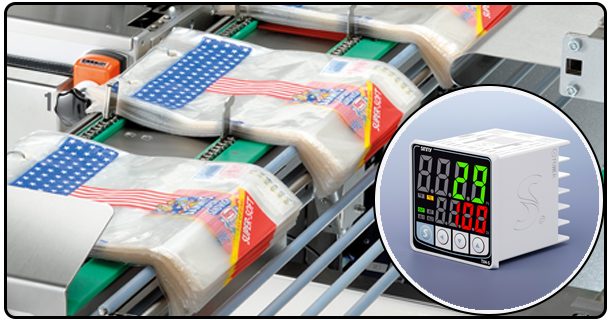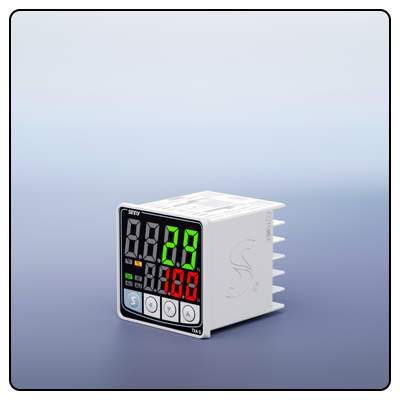Common Issues and Solutions in Temperature Control Systems: An In-depth Guide
Discover common temperature control system issues and their solutions, such as inaccurate readings, temperature fluctuations, overheating systems, communication failures, and others, to achieve maximum performance for these systems.
1. Introduction
Temperature control systems are integral in various industries, helping ensure processes, products, and environments maintain ideal conditions. Designed to monitor and regulate the temperature within specific ranges for stability and consistency, such systems also keep performance reliable by understanding common problems encountered and how best to address them. This article delves into some common issues and provides practical solutions that address them directly.
2. Inaccurate Temperature Readings
Causes:
* Sensor Calibration Drift: Sensors may gradually lose their calibration over time due to aging, environmental conditions, or mechanical stress and cause inaccurate temperature readings. These readings could then become increasingly inaccurate over time, causing erroneous temperature readings, for example
* Incorrect Sensor Placement: Placing sensors too closely to heat sources or areas with limited airflow may result in inaccurate temperature readings that cause inaccurate control and system damage. This leads to erroneous temperature management, inaccurate control strategies, and potential control malfunction.
* Electrical Interference: Electrical noise from nearby equipment can interfere with sensor signals, leading to inaccurate readings in industrial settings with high electromagnetic interference levels. This problem is especially prominent.
Solutions:
* Regular Recalibration of Sensors: To restore accuracy and maintain proper calibration settings for sensors, periodic recalibration can restore their accuracy by making necessary changes to offset or gain settings to account for any drift in their performance. This procedure could involve altering offset/gain settings as essential to correct for potential fluctuations that arise with use over time.
* Proper Sensor Placement: Ensuring sensors are situated appropriately can increase accuracy; avoiding direct heat sources and drafts while contacting monitored surfaces is vitally important.
* Shielded Cables and Proper Grounding: Shielded cables can reduce electrical interference, while proper grounding techniques help ensure noise doesn't interfere with sensor signals.
3. Temperature Fluctuations
Causes:
* Inadequate Insulation: Low insulation can contribute significantly to temperature variations by losing or gaining heat by interacti with the environment. This effect undermines temperature control systems and results in inconsistent product quality.
* Faulty Control Algorithms: Faulty control algorithms can lead to temperature oscillations and instability that threaten to undermine system stability or cause potential system damage.
* Environmental Factors: External influences like changing airflow can wreak havoc with temperature control systems and lead to sudden temperature swings or fluctuations, impairing their performance and potentially altering performance and functionality of these devices.
Solutions:
* Improving Insulation: Employing top-of-the-line insulation materials can assist with keeping temperatures consistent by decreasing heat transfer between indoors and outdoors - ultimately increasing efficiency and effectiveness in temperature regulation systems.
* Tuning Control Algorithms: Optimizing control algorithms such as PID controllers can dramatically enhance system stability; techniques like the Ziegler-Nichols method may be utilized to achieve optimal gain values for these controllers.
* Mitigating Environmental Influences: By taking steps to control ambient temperature and airflow within your system, implementing measures designed to address external influences on its temperature stability can reduce externally caused effects on this matter.
4. System Overheating
Causes:
* Overloaded Heating Elements: Under-utilization can cause heating elements to overheat, overheat, and ultimately fail, resulting in system shutdowns and potential component damages.
* Poor Ventilation: Without sufficient ventilation, heat build-up within your system may lead to components overheating, leading to reduced performance or potential system failure.
* Malfunctioning Components: Faulty components such as fans or thermostats that do not regulate temperature properly may overheat, damaging both your system and reducing its lifespan. This can damage it further.
Solutions:
* Ensuring Proper Load Distribution: Spreading out the load evenly among heating elements will prevent them from becoming overloaded and maximize system efficiency and performance.
* Improving Ventilation: Improving ventilation can help dissipate heat and prevent overheating of systems, improving performance and reliability over time. By adding fans or improving airflow, ventilation enhancement can assist with heat dissipation while simultaneously improving systems' performance and reliability.
* Regular Maintenance and Component Replacement: Regularly conducting routine maintenance checks and replacing malfunctioning components will help your system function more efficiently while also helping prevent overheating.
5. Communication Failures
Causes:
* Clumpy Wiring: Damaged or insecure connections may interfere with system components' communication channels and lead to system malfunction and reduced performance.
* Network Issues: Issues related to networks, such as signal interference or connectivity, can lead to communication failure and compromise systems' overall performance and reliability.
* Incompatible Devices: Utilizing devices not designed to function within your temperature control system may lead to communication problems that create system malfunctions and decrease overall performance. This could eventually halt operations for good and significantly lower performance levels.
Solutions:
* Inspect and Securing Wiring Connections: Wiring connections must be inspected for loose or damaged wires to maintain optimal system performance and reliability and prevent communication disruptions that might interfere with daily tasks or lead to systemic malfunction. Doing this regularly will significantly increase system upkeep efficiency and performance.
* Troubleshooting Network Issues: By recognizing and solving network issues such as signal interference or connectivity problems, communication may be restored, restoring both performance and reliability in systems.
* Ensuring Device Compatibility: Selecting devices compatible with a temperature control system can prevent communication failures and facilitate seamless operation, helping enhance system performance and reliability.
6. Energy Inefficiency
Causes:
* Outdated Equipment: Older equipment may be less energy-efficient, leading to greater consumption and operational expenses. This inefficiency increases consumption costs and results in more extraordinary energy expenses.
* Ineffective System Design: When implemented poorly, systems with good design often lead to excess energy use, increasing operating costs, and improved performance. This usually translates to higher operational expenses as well as decreased performance levels for business operations.
* Lack of Energy-Saving Features: Systems need energy-saving modes, or features may consume more power than necessary, leading to higher operating costs and decreased performance.
Solutions:
Upgrade to Modern Energy-Efficient Equipment: Upgrading to Modern Energy-Efficient Equipment can significantly lower energy usage while decreasing operational costs and improving system performance. This approach offers multiple potential solutions.
* Optimizing System Performance: Optimizing system design to boost energy efficiency can significantly decrease operational costs and environmental impacts while simultaneously increasing the performance and reliability of a system.
* Implement Energy-Saving Modes and Features: Utilizing energy-saving features such as variable speed drives or advanced control algorithms can significantly enhance energy efficiency, helping lower operational costs while improving system performance. This strategy may lead to reduced operational expenses and enhanced system functionality.
7. User Interface Issues
Causes:
* Complicated or Inappropriate Interfaces: Complicated interfaces can make it hard for users to operate systems efficiently, leading to errors and reduced performance.
* Inadequate User Training: Insufficient training may result in user errors and inefficient system operation, leading to reduced performance or potential system malfunctions.
* Software Bugs: Software bugs can lead to user interface malfunction and become nonresponsive, which has severe ramifications for a system's performance and reliability.
Solutions:
* Simplifying the User Interface: darui This solution involves developing user-friendly interfaces with intuitive controls to make systems more straightforward to operate, ultimately increasing performance and reliability.
* Offering Comprehensive User Training: Offering user training programs can ensure users fully comprehend how to operate a system effectively, enhancing performance and reliability.
* Regular Software Updates and Bug Fixes: Keeping software current can ensure a more user-friendly user interface while improving the performance and reliability of systems.
8. Maintenance Challenges
Causes:
* Infrequent Maintenance Schedules: Inconsistent or missed maintenance can lead to system failure and reduced performance, leading to higher operational costs and potential system malfunction.
* Lack of Trained Personnel: Inadequacy in staff skills makes performing necessary maintenance difficult and may lead to decreased performance and system malfunction.
* Inadequate Documentation: Insufficient documentation can stymie maintenance efforts and troubleshooting processes, leading to reduced performance or potential system malfunction.
Solutions:
* Establish Regular Maintenance Routines: Regular maintenance schedules will ensure the system remains in an ideal state, improving its performance and reliability.
* Training and Hiring Skilled Technicians: Investing in training programs and hiring skilled personnel can enhance maintenance capabilities and thus boost system performance and reliability.
* Documenting Maintenance Activities and System Configuration in Detail: Maintaining detailed records of maintenance activities and system configurations can simplify troubleshooting repairs, leading to improved system performance and reliability.
9. Conclusion
Temperature control systems are essential to many industries for maintaining ideal working environments; however, they may run into various issues that impact performance and reliability. By understanding these problems and applying suggested solutions, users can ensure their temperature control systems operate efficiently and effectively - such as regular maintenance checks, calibrated equipment updates, and energy-efficient solutions that prevent issues altogether and keep running at optimal capacity.
- Step-by-Step Guide to Using a Digital Temperature Controller | Expert Tips
- Benefits of Implementing a Temperature Control System: Enhancing Quality, Efficiency, and Safety























